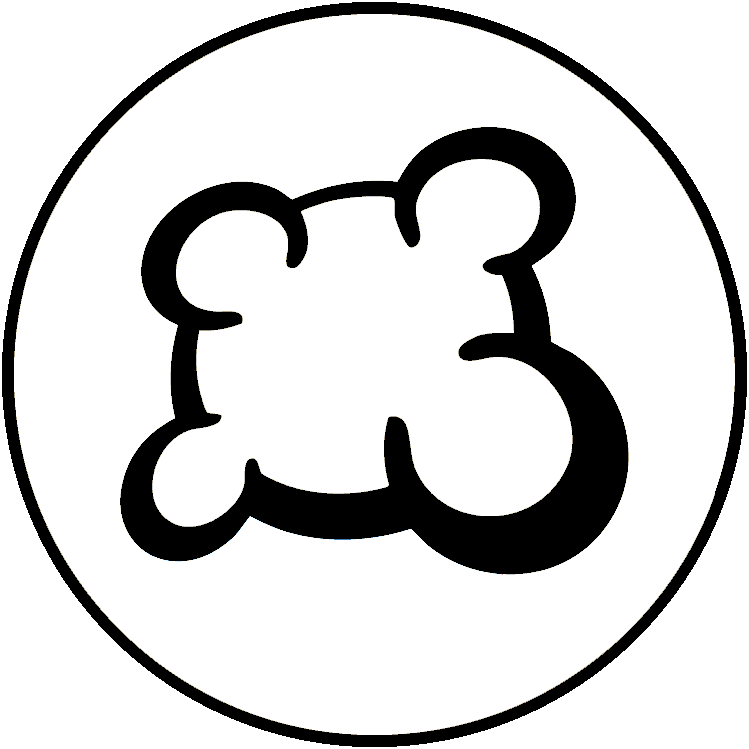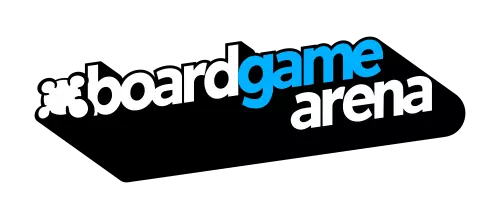Setup
Each development card deck is shuffled separately, and then placed in a column in the middle of the table in increasing order from bottom to top (◯;◯◯;◯◯◯).
4 cards are revealed from each level.
The noble tiles are shuffled, and as many of them are revealed as there are players plus one (example: 5 tiles for a 4 player game).
The remaining tiles are removed from the game; they will not be used during the game.
With 2 players: 3 tokens of each gem color except gold are removed (there should be only 4 of each remaining).
With 3 players: 2 tokens of each gem color except gold are removed (there should be only 5 of each remaining).
Gameplay
Play then proceeds clockwise.
On their turn, a player must choose to perform only one of the following four actions.
- • Take 3 gem tokens of different colors.
- • Take 2 gem tokens of the same color. This action is only possible if there are at least 4 tokens of the chosen color left when the player takes them.
- • Reserve 1 development card and take 1 gold token (joker).
- • Purchase 1 face-up development card from the middle of the table or a previously reserved one.
Selecting Tokens
A player can never have more than 10 tokens at the end of their turn (including jokers). If this happens, they must return tokens until they only have 10 left. A player can return all or some of those they’ve just drawn
Reserve a Development Card
To reserve a card, a player simply needs to take a face-up development from the middle of the table or (if you’re feeling lucky) draw the first card from one of the three decks (level ◯;◯◯;◯◯◯) without showing it to the other players.
The reserved cards are kept in hand and cannot be discarded.
Players may not have more than three reserved cards in hand, and the only way to get rid of a card is to buy it.
Reserving a card is also the only way to get a gold token (joker). If there is no gold left, you can still reserve a card, but you won’t get any gold.
Buying a Development Card
To purchase a card, a player must spend the number of tokens indicated on the card. A joker token can replace any color. The spent tokens (including any jokers) are returned to the middle of the table.
Once you purchase a development card, it will produce a bonus for buying additional development cards (or attracting nobles) in the amount of 1 for the color in the upper right hand corner. This effectively reduces the cost of buying new development cards by the amount of all the bonuses on all of your purchased development cards. For example, if you have purchased 2 development cards that have red tokens in the top-right corner, you can buy a card that requires 3 red tokens at a cost of 1 red token because you have a bonus of 2 red. The bonus on purchased development cards can be used over and over again.
A player may purchase one of the face-up development cards in the middle of the table or a card in their hand that was reserved on a previous turn.
Purchased development cards are placed face-up in front of the player, and give that player prestige points equal to the number in the top-left corner of the card.
The Nobles
At the end of their turn, each player checks the noble tiles in order to determine if they’re receiving a visit from one of them.
A player can be visited if they have (at least) the quantity and type of bonuses indicated on the noble tile.
It is impossible to refuse the visit from a noble, which is not considered to be an action.
If a player has enough bonuses to be visited by more than one noble at the end of their turn, that player chooses the noble to be received.
The tile obtained is placed face-up in front of the player, and give that player prestige points equal to the number in the top-left corner of the tile.
End of the Game
When a player reaches 15 prestige points, complete the current round so that each player has played the same number of turns.
The player who then has the highest number of prestige points is declared the winner (don’t forget to count your nobles).
In case of a tie, the player who has purchased the fewest development cards wins!
BGA Settings
In "competitor" mode, game assists (highlighting buyable/reservable cards, showing remaining costs, auto-spending gold) are disabled.
Variants
The Silk Road Expansion: Cities
During setup, remove the Nobles and reveal 3 City tiles.
Instead of winning directly with prestige points, if a player meets the requirements of a city tile at the end of their turn, the game ends after the current round.
Only players meeting the requirements of any city tiles can win the game. If several players do, the player with the most prestige points among them wins. If there is still a tie, the player with the fewest cards wins.
The Silk Road Expansion: Trading Posts
During setup, place 5 stacks of trading posts, each stack containing 1 tile per player.
A player can take up to one trading post at the end of their turn if they meet its requirements. The player gains its power until the end of the game.
The Sun Never Sets Expansion: The Orient
2 cards from each expansion deck (level ◯;◯◯;◯◯◯) are also available for purchase. They follow the same rules as the base game cards.
The Sun Never Sets Expansion: The Strongholds
During setup, each player takes 3 strongholds of the same colour.
Each time a player buys a card (before replacing it), they must place or move one of their strongholds to a card unoccupied by opponents' strongholds, or choose a card containing exactly 1 of an opponent's strongholds and remove it.
When a player buys or reserves a card with at least 1 of their strongholds, they must take back all their strongholds.
Cards with strongholds can only be bought or reserved by the player placing them. If a player has 3 strongholds on the same card, they may buy it after their standard action and paying its usual cost, but before taking nobles.

